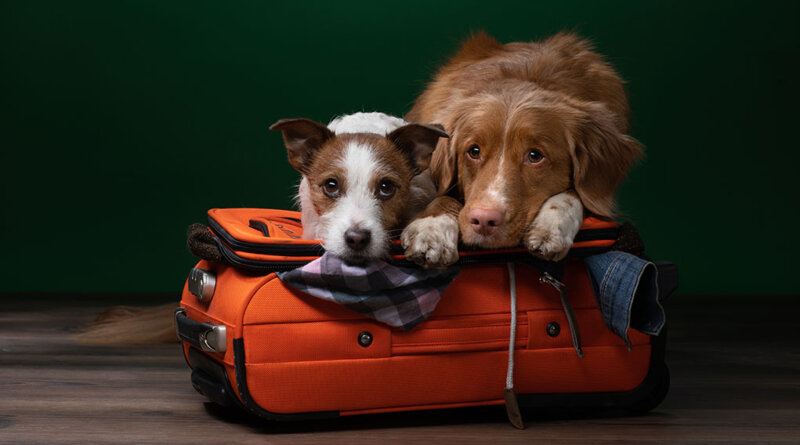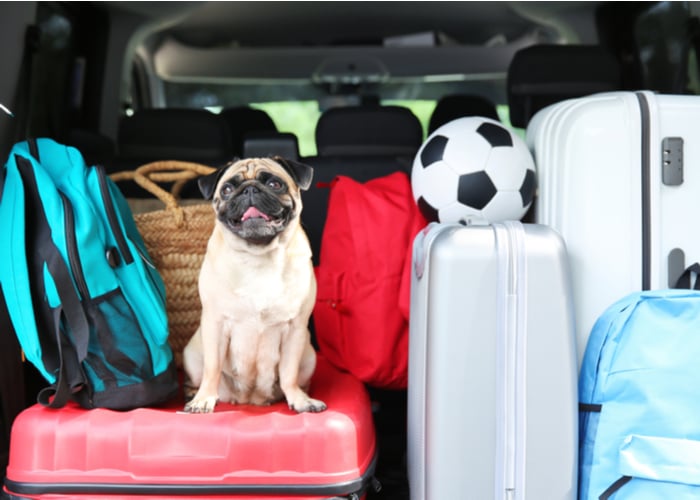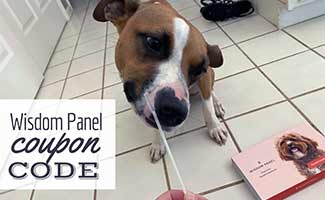How Does it Work? – Top Dog Tips
Are you planning to move to a new state or a new country? Have you ever heard of a Pet Relocation Service?
Well, these services can make your life easier.
Sometimes in life, this happens. We get a new job, thinking about retirement, or any other adventurous opportunity to relocate internationally occurs, a lot of pet owners are quick to say “yes” without even thinking if their pets can come along with them safely.
Pet international travel might sound intimidating at first and it’s certainly a task that requires full attention to detail.
But with the right preparation and guidance, pet relocation can be safe and comfortable.
So the question now is, how does pet relocation work?
Pet Relocation Service: How Does the Process Work?
Pet relocation is pretty simple. Your pet is picked up and checked in at the departure airport.
Next, they need to be cleared through customs and then delivered to their owner’s new residence.
Hiring a pet relocation specialist or services can help you ease your mind and it can be less of a hassle. Usually, these services are responsible for selecting the appropriate flight arrangements.
They’ll be the ones reviewing the import and export documents. Making your job a lot easier.
On the other hand, other pet relocation services arrange a door-to-door operation by opening offices at major hubs or franchising their businesses in different parts of the world.
A Pet relocation service is sometimes necessary to facilitate customs clearance or deliveries in more obscure countries.
For instance, a great example of a pet relocation service company is the Independent Pet and Animal Transportation Association or IPATA.
The IPATA was founded in 1979. It was built to give competent, professional, and safe pet transportation relocation services throughout the USA and around the world.
Their membership has increased from six U.S. pet shippers to 485 members in over 90 countries with assistance to all major airports worldwide.
The IPATA is one of the most reputable pet relocation services out there. Their affiliates can safely coordinate door-to-door services for pets.
They also hold an annual conference where the members gather to meet and exchange ideas.
Moreover, certain members attend seminars about country import requirements and species-specific handling techniques.
The IPATA also attends forums where major airlines can answer questions in a round-table format.
All of the factors above can affect the overall cost of these services. But would you rather risk your pet’s safety just because you chose a cheap service?
Our dogs deserve the best option. Always choose quality over quantity.
Why Hire a Pet Relocation Service?
The main reason why pet owners hire pet relocation services is for their pet’s safety.
There are a lot of myths surrounding pet air travel that can trigger anxiety in pet owners when it comes to moving their pets.
And when things do go down south, a lot of these incidents are without pets relocation services’ assistance.
Some things are just better with professional help. Don’t be the kind of guy that doesn’t want to ask directions in the first Cars movie.
Hiring pet relocation services secures you that your dog is in the safest hands. They must make sure that your pet arrives safely and without any incident.
One common concern that you should look out for is the temperatures affecting your pet during their travel.
Believe it or not, some airlines will still embargo pets during the winter or summer season.
However, most responsible and reputable pet relocation services can work with airlines to keep pets in a climate-controlled environment for the duration of the flight.
This way, your dogs will not be exposed to inclement weather. This also allows you to relocate your pets worldwide and at any time of the year.
Tips to Make Your Pet’s Trip Safe
When it comes to relocating your pet to another country, it would be best to plan.
Just like with humans, international relocations require months of planning and thorough attention to paperwork and other details.
My advice is to research carefully. Gathering and utilizing the proper information can do you good in the long run.
Also, preparing a certain timeline can help take off stress. Here are other tips to make your pet’s relocation safer and more comfortable:
Research Important Rules and Requirements
The first thing you’ll be needing to do is research pet import requirements for your future home. This is important because rules can differ significantly from one country to another.
Microchip
Some countries require pets to have a microchip. For instance, if you’re moving to Europe, every pet should be identified via a microchip. There is no other form of identification that’s acceptable.
They also only comply with ISO Standard 11784 or Annex A to ISO Standard 11785 microchips.
All Animals Need to Be Fully Vaccinated
Another rule that you’ll find is that it is necessary to have your pet vaccinated by a vet whether it is a primary vaccination or a vaccine recall.
For instance, an anti-rabies vaccine should be given to your dog by your vet at least 21 days before departure.
If you’re relocating your pup to Europe, dogs should also be vaccinated for Rabies, Hepatitis, Parvo, Leptospirosis, and Distemper within the last 12 months or a minimum of 4 weeks before departure.
Vet Health Certificate and International Health Certificate
They also require you to present a Vet Health Certificate. This is the standard health certificate to be filled out by your accredited vet.
On the other hand, the International Health Certificate needs to be completed by your vet within 10 days of departure.
Depending on where you’ll be relocating, some certificates need an additional USDA Endorsement.
Crate Training
Crate training is probably the most important step when it comes to relocating your pet safely and comfortably.
A dog that is comfortable in the travel kennel can help ease the anxiety their anxiety (and yours as well).
Take a few training steps before the day of your departure to avoid stress surrounding cargo pet travel.
Here are a few steps to crate train your pup:
Step 1: Choose the Right Crate for your Dog
The first step is choosing the appropriate crate for your dog. Pick one that’s durable, comfortable, and flexible.
Usually, the crate should be big enough for your dog to stand up, sit down, and turn around. Your pet must be able to extend its paw for them to comfortably lie down.
But with that being said, it is also important to not buy a crate that is too big for your dog. Make sure to measure your pet first before buying a crate.
If you’re planning to relocate your dog internationally, it is best advised to buy a brand new crate rather than a used one for hygiene purposes.
These pre-owned crates may have been used by unvaccinated pets.
These crates can contain bacteria and viruses that can harm your dog. Examples of these are kennel cough and canine influenza.
On the other hand, the dog’s crate should also be approved by the airline’s regulations.
Step 2: Make the crate comfortable for your pet
Once you got your dog crate, it also helps to make the crate comfortable for your pet.
You can put your dog’s favorite toys, blanket, or treat bowl inside the crate. Adding an old t-shirt can sometimes help to comfort your pup.
Placing their favorite items in the crate can help lure them inside so you can start their training. Once you’ve begun, take off the door so your dog can easily get in and out whenever they want.
Also, place the crate in a quiet spot. This can help them associate the crate with a calm and safe space.
Step 3: Gentle introduction to the crate
Crate training is introducing an unknown object to your dog. And if we want them to do good, train them with positive reinforcement.
Generally, dogs are naturally curious. They will eventually explore the crate on their own.
Once they’re inside the crate, reward them with treats or praise. Dogs thrive with positive reinforcement training.
If your pup is hesitant from entering its crate, it is important to be patient and don’t force them. Instead, sit right next to the crate and encourage them in with play and treats.
Continuing to praise them every time they get into the crate can help them feel more comfortable.
Make it a fun environment and don’t forget to reward them with their favorite treats.
Increase the amount of time your dog spends in the crate slowly. These things take time and it will for sure be worth it.
Step 4: Crate train your pet during the night
Only do this step when your dog is completely comfortable inside their crate even when you leave the room.
On the first few nights, keep the crate near your bed or near enough that he knows you’re around.
After a few nights, move the crate to another room. If they can spend at least 5 consecutive nights alone in their crate, your pup will most likely be fine during your flight.
Step 5: Do a trial run
Doing a trial run doesn’t mean you’ll book a flight. The best way to replicate flight conditions is by taking your dog on a drive.
Drive around town, plan a road trip, or include them on your next errand run.
Make sure to encourage them when they are feeling stressed. Give them treats and give them their toys.
Airline Selection
When it comes to airline travel, the best route for you might not be suited for your pet. Also, there are very few airlines that have a complete pet-safe program.
A pet relocation service can help you with that. They know and have connections with certain airlines that can secure the safety of your pet throughout their travel.
Examples of pet-safe policies are making sure your pet is in a climate-controlled environment, never leaving them on the tarmac, and making sure that they are the last ones on the plane and the first ones off.
Frequently Asked Questions about Pet Relocation Services
Can you send a dog on a plane by itself?
Yes, it’s common to do so. The pet will be sent via air cargo. There are rules and regulations that owners need to check depending on the airline.
But there are stricter rules and documentation when having the pet travel alone. Some breeds are restricted during certain seasons, so keep that in mind.
It’s best to arrange a pick-up and drop-off for your pet throughout the transportation.
You may do so by contacting a family or a relative. If not, a pet transportation service can be another option.
Can I buy a seat for my dog on an airplane?
Yes but it does depend on the airline. Not all airplanes allow it but a lot do.
Some carriers that are brought on the plane are considered carry-on luggage.
Can Two Pets Travel in One Crate When Flying?
It depends. Some airlines are strict about one pet per crate even if the crate is big enough for two dogs or kittens.
This rule was established to keep the travel safe due to possible stress and anxiety pets may face during traveling.
Pet Relocation Services Summary
In conclusion, pet relocation services are here to make our life easier and most importantly, to make our pet’s travel safer.
Life is unpredictable. You never know that one day you’re living here, and the next thing you know, you’re packing your things to move to another state or another country.
And when these changes occur, we should never forget about our best canine pals. But traveling with your pet is not an easy task.
It requires plenty of paperwork, crate training your pup, and extra possible fees. Hiring a Pet Relocation Service can make these tasks easier and smoother.
These services will be the ones responsible for reviewing the import and export documents. They will also arrange the appropriate flight arrangements for your pup.
So if you’re planning on moving out of the country, it’s my advice that you research and talk with a pet relocation service.
Even if it can be a bit pricey, isn’t our dog’s safety more important?
RELATED: COSTS OF SHIPPING DOGS BY AIR
Related









